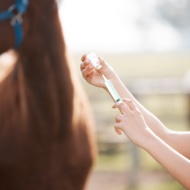Artificial intelligence could recognise pain in cats, study finds
Two AI models were presented with facial images of 84 cats.
A new study has suggested that artificial intelligence (AI) could be used to more accurately identify signs of pain in cats.
The technology may have the capability to learn and read the facial expressions of cats, to better understand whether they are experiencing pain.
The research involved two AI models being presented with facial images of 84 cats, captured using a mobile phone. The cats were of different breeds, ages, sex, and medical history and were owned by clients of the Department of Small Animal Medicine and Surgery of the University of Veterinary Medicine Hannover.
The cats were first scored by experienced veterinary surgeons, who used the Glasgow composite measure pain scale (CMPS) to assess changes in the cat’s facial expressions and behaviour, as well as considering the patients’ clinical history. This was used to divide the images into two classes: ‘pain’ or ‘no pain’.
This scoring was used to train AI models in deep learning (DL) and landmark-based (LDM) approaches, which are both based on manual landmark annotations on facial alignment.
The aligned facial images were then input into AI models. While they were entered into the DL model as they were, the LDM model used 48 landmarks in the image to create multi-vectors capturing cats’ ears, noses, mouths and eyes.
The results suggested that the LDM approach was the more accurate model, scoring above 77 per cent accuracy compared to above 65 per cent for the DL approach. A cat’s nose and mouth appeared more important for classifying pain, with ears being less relevant.
However the LDM model also required more time and resources to run, with the 48 landmark annotations needing to be manually created before input.
The researchers conclude that AI could be used to recognise pain in cats, and may even result in more accurate pain recognition in clinical settings after further development.
Currently they say that the dataset used in the study was limited, as was the use of still photos rather than video. They also state that clinical impression should override the binary response of ‘pain/no pain’ that an AI model would provide, and pain relief should be given if there is any doubt.
The study also reflects on the ethical issues that will need to be considered before AI technologies are introduced into clinical practices, to effectively protect pets and their owners.
The full study can be found in the journal Scientific Reports.
Image © Shutterstock



 Zoetis UK has apologised for a supply shortage of Equip Artervac, caused by a manufacturing issue.
Zoetis UK has apologised for a supply shortage of Equip Artervac, caused by a manufacturing issue.